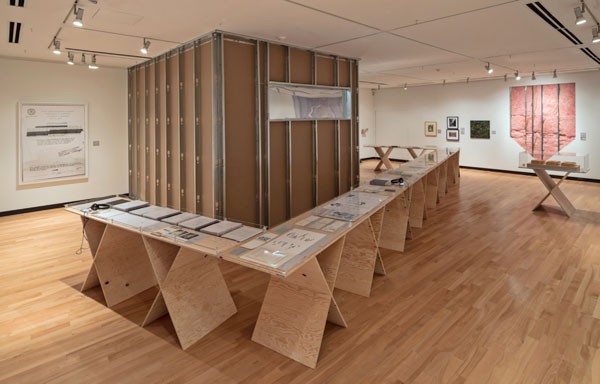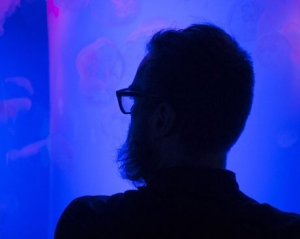The last two Sobey Art Award recipients were Concordia alumni: Nadia Myre, MFA 02, in 2014, and Abbas Akhavan, BFA 04, in 2015.
Stankievech, a native of Okotoks, Alta., is now based in Toronto. He’s a founding faculty member of the Yukon School of Visual Arts in Dawson City, co-director of art and theory publisher K. Verlag in Berlin, Germany, and director of Visual Studies in the Faculty of Architecture, Landscape and Design at the University of Toronto.
On the news of his nomination, Stankievech discusses his “fieldwork,” a term he ascribes to his artistic approach of engaging with a geographic site or landscape, as well as his success as an artist and his experience at Concordia.
What is your educational background?
Charles Stankievech: “My education is composed of a strange trajectory: first theology, then philosophy and literature, then a camera union apprenticeship, then my MFA at Concordia, and finally some course work in architecture. But I learned the most by teaching.
The learning curve is exponential as a professor, so I’d have to also credit my time at the Yukon School of Visual Arts, where I was founding faculty member, and my time now as director of Visual Studies at the University of Toronto.”
How has Concordia helped shape you as an artist?
CS: “You could say I became an artist at Concordia, as I entered as a filmmaker but left teaching sculpture and interdisciplinary art classes.
Hexagram [The Hexagram-Concordia Centre for Research-Creation in Media Arts and Technologies] had just started and I had amazing access to gear and facilities that enabled me to make professional work and conduct experimental research.
It’s also important to note that Michèle Thériault had just arrived at Concordia to direct the Leonard and Bina Ellen Art Gallery. Michèle was really the first one in the art world to support me and take risks, and so I’m eternally grateful to her.
The Ellen Gallery is an essential part of the graduate research at the school and was the most important interface for me as a student with the professional art scene. It also provided me with an important bridge between graduation and professionalization.
Michèle has supported an important part of conceptual art in Canada, not only during students’ studies and the shows she brings in for the university community, but also by giving alumni a platform after graduating.”
Did you always know you would become an artist?
CS: “Not at all. It was in my late 20s that I made the transition to art and I didn’t think it would last.”
What is your greatest artistic accomplishment?
 Stankievech’s CounterIntelligence project, pictured at the University of Toronto’s Justina M. Banicke Gallery in 2014, examined the intersection of art and military intelligence communities. | Photo credit: Toni Hafkenscheid; Courtesy Charles Stankievech and Justina M. Barnicke Gallery
Stankievech’s CounterIntelligence project, pictured at the University of Toronto’s Justina M. Banicke Gallery in 2014, examined the intersection of art and military intelligence communities. | Photo credit: Toni Hafkenscheid; Courtesy Charles Stankievech and Justina M. Barnicke Gallery
 Sobey Art Award nominee Charles Stankievech was previously shortlisted for the prize in 2011. | Photo credit: J. Hallberg-Campbell/Wondereur
Sobey Art Award nominee Charles Stankievech was previously shortlisted for the prize in 2011. | Photo credit: J. Hallberg-Campbell/Wondereur